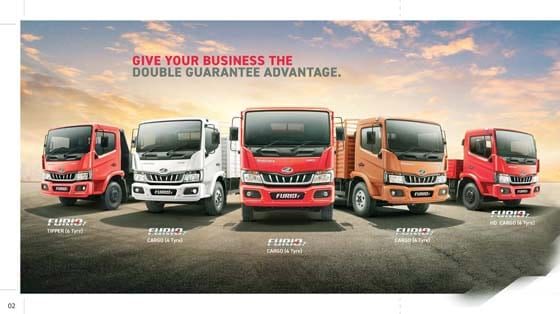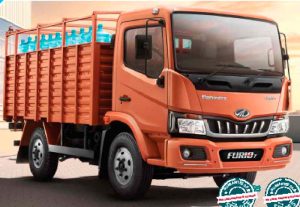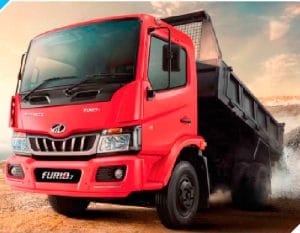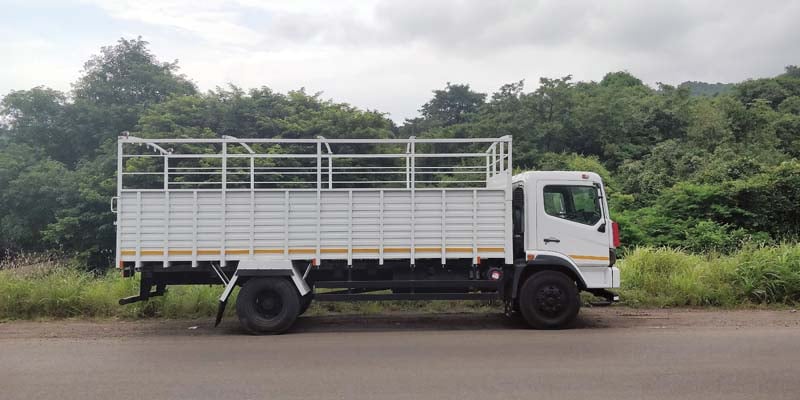In an Industry Talk With CV session, Jalaj Gupta, Business Head, Commercial Vehicles, Mahindra & Mahindra Ltd. and Dr Venkat Srinivas, Senior Vice President – Product Development Head, Commercial Vehicles – Mahindra Group spoke to Ashish Bhatia on the strategy of filling white spaces for growth

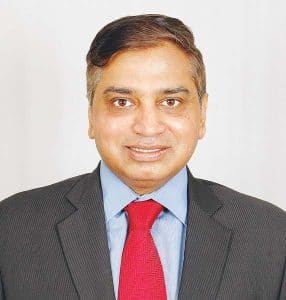
Q. What are the opportunities you’re confident of tapping with the addition of the Furio 7 to the product portfolio? have you succeeded at filling the white spaces?
A. Jalaj Gupta: If you look at the LCV segment, the TIV was about 36,000, about two years ago. And this year also we are anticipating the entire LCV TIV to be somewhere around the same range, maybe marginally a shade lower than 36,000. Now if you look at the sub-segments of the LCV segment, from three and a half tonne to seven and a half tonne (3.5-tonne to 7.5-tonne), MTBD is present in the 3.5-tonne to the six-tonne segment with the Jayo. That’s where we play. In the six- to 7.5-tonne sub-segment, which accounts for 50 per cent of the total LCV TIV, we didn’t exist there. So with the launch of this new LCV, the Furio 7 we are addressing this entire six to 7.5-tonne TIV. What it does to us is that it gives us a shot at addressing the entire TIV of LCVs starting from 3.5-tonne to 7.5-tonne this. Up till now, we were addressing 50 per cent of that TIV. This gives us the opportunity to take a crack at the remaining 50 per cent of the sales.
Q. How are you filling the white spaces in the industry as a whole?
A. Absolutely, besides increasing our addressability, I think this second factor is very important. When Furio as a brand as a platform was envisaged it proved to be a game-changer in the industry. So if you look at the new LCV, it is essentially an extension of the same platform. It’s the same Furio platform with which we are now addressing the LCV segment. So you can imagine the versatility of this particular platform that we are addressing. Spanning from six-tonne to 16-tonne with this particular platform as a permutation and combination of various aggregates, one, it increases the addressability and two, it brings the benefits of the Furio platform to the LCV segment.
Dr Venkat: When we envisaged the Furio platform, we actually did not envisage a single platform, we envisaged it all the way from the lower end of the LCV platform all the way up to the ICV range and up to the medium commercial vehicles. So the platform architecture is actually capable of delivering products in that entire range. And as you know, we have launched two cabins. We’ve got a day cabin, and we’ve got a sleeper cabin, and that’s already been in the market for some time. That’s been launched in BSIV. And now with this Furio LCV launch, we are actually launching the third cabin, designed originally along with the other two to be extremely modular. Therefore the appearance, the aesthetics, the styling, everything was done together at that time. The chassis, the powertrain lineup, BSVI migration did come as a surprise to the entire industry at that time. But everything was actually envisioned as an entire product portfolio made as modular as possible.
Q. Do you expect platform modularity and consolidation to remain a strong approach globally with this launch as a backdrop?
A. Jalaj Gupta: Yes, definitely. I think that’s always been the way to go. And particularly, in recent days and also past several years. When you see wild market shifts, you know, you suddenly see certain segments going up, and certain others coming down. clearly having the flexibility helps optimise investments. Trying to make these products on basically the same platform would continue to be a huge plus. And that’s what we are actually envisioned from the word go.
Q. Please elaborate on the emphasis on offering a double value proposition. What sort of a mammoth effort did it take to set new benchmarks?
A. Dr Venkat: The mileage guarantee was something that as a company our management including several of us had come up with originally on the Blazo range. So, we had launched it at the 2016 Auto Expo, and this was a way of essentially as a challenger brand to announce that we had arrived. Not only with a better product, but that we stand entirely behind it in terms of the guarantee. With such a strong assurance in place, we found the customers to be very satisfied. While we assured mileage, we also changed the perception in the market. So, this has become a cornerstone of MTBD product portfolio and product strategy. When we launched the Furio ICV two to two and a half years ago, we said that we have to offer this kind of a guarantee then and similarly on the Furio 7 launched now. We work very hard to deliver on our promises backed by a lot of team effort.
We chose everything including our powertrains and all our aggregates very carefully to ensure that we could deliver such a performance all the way from concept development to commencing production. It is not that we changed course in between but something that we set out to do with the Furio platform from the very beginning. It was a very critical aspect as you might imagine. Things like putting weight only were required and at the right places, making sure aerodynamics and the overall design of the product is the best from a fuel economy standpoint and so on.
Jalaj Gupta: In the BSVI range, the mileage guarantee with Furio is something that we have started with and you will see some more action happening on this particular front end in times to come. We did deep research into this particular category, and have concluded that the LCV customer, the operator is very, very risk-averse. So, basically, he wants just a tried and tested vehicle. He doesn’t want to experiment too much. And if you look at the competition around, there has been this legacy model which has carried on from last 20-30 years, I remember when I began my career from that time, the legacy models were available and for some reason or the other, the market has not upgraded the way it has for other categories. Whether you look at the HCV as a category or look at ICV as a category, the market has upgraded itself to the next level in terms of safety, comfort, and on many other fronts.
The particular category of LCV has not been upgraded and one of the primary reasons in our understanding is the customer being slightly risk-averse. We wanted to deep dive as to what are the various apprehensions that the customer had. One of the big ones that came in was the resale price or the resale value that the customer will get when he goes to exchange be it for a colour upgrade, fleet expansion or to upgrade for a higher payload carrying capability. If we can address that concern or that risk element also the uncertainty in the customer’s mind, it could be a good value proposition. For example, in the shape of offering a resale value guarantee after five years, which is usually when that truck gets exchanged. Not just that this resale value guarantee is even transferable. So let’s say, in three years, I was to sell you a truck here you still have two years to enjoy this resale value guarantee as a second owner.
Q. Does the resale value assurance set at five years allow the first owner to realise the low TCO over the incurred, initial acquisition cost?
A. Jalaj Gupta: Absolutely. So I’ll start with the warranty. If you look at the product, we are offering a three lakh unlimited kilometres warranty on the product. Typically if you see these products, the LCV typically does anything between 25,000-30,000 kilometres a year. Three years are very well covered with three lakh kilometres. So and the warranty that we are offering is an end to end warranty. It’s one of the best in the class warranty that’s one part of the question. To answer the second part of the question, the answer is yes. I will just give you one industry insight before I elaborate. Earlier, the LCV segment was very clearly demarcated for an intra-city operation and the ICV is where the inter-city operation came into the picture. It was a kind of unsaid rule and one of the ways of testing it is to look at the driver’s cabin. For example, the sleeper cabin provision was provided only in the ICV range and never on the LCV range because the ICV was always an intercity kind of operation.
You are seeing these in a twin tyre, six tyre LCV segment to an extent. Therefore the number of kilometres on these vehicles has increased quite a bit. I will not be surprised if the recent LCV segment is doing much more than 30,000 kilometres a year or so. If you look at demand post-pandemic or even during pandemic most of the demand came from the e-commerce cargo of essentials like medicines and vaccines. The vehicles travelled not only inter-city but intra-city and more so in tier two, and tier three towns and so on and so forth. Even in the pandemic year, the LCV did not degrow, it remained almost the same as FY20. Right. Whereas the ICV despite the severe lockdown in the first six months, where the intercity movement was almost zero, that gap in Total Industry Volume (TIV) shrunk only from 36,000 to 30,000.
That’s the kind of boom in terms of the requirement that we are witnessing in the I&LCV load segment which is unprecedented. It is now doubling up not only intra-city but also in inter-city applications as well. So in terms of the usage and in terms of the rates that they’re able to get, including the special applications etc. It is making it viable for the customer to use it in five years and then go for upgrades too.
Q. With this addition are you expecting a similar resilience as your previous offerings of the LCV segment?
A. I’ll talk about ICV where we put 2000 Furios on the Indian roads. 30 per cent of it is the repeat buy which indicates that we have got the product part of it correctly. We have got the product acceptance and the product price absolutely right and I see no reason because the DNA of the platform remains the same in the LCV segment. I see no reason why the same acceptability and the repeat purchase will not be repeated. 65 per cent of the TIV or the customers are single-vehicle owners or owners cum drivers So it will take a while for the word of mouth to spread. But one thing is for sure the way we are taking care of not only the financial part of it, which is the profitability or the mileage part of it, but we are also taking care of the driver comfort part of it. He’s the driver cum owner and it’s just a matter of time that I think, surely or steadily, we will be able to establish the product and scale up on the numbers.
Q. What are the different duty cycles that you expect to cater to with the Furio 7? Is it a good fit for niche segments like special applications?
A. It is designed to be very productivity-oriented. We’ve provided a very comfortable cabin with a very safe vehicle. Productivity has been enhanced as we’ve given all the right load body sizes that are required. So in terms of what can be carried, I think this can apply to all usage classifications. There are special usage vehicles as well that can be built, for example, a superstructure can be built on this. We’ve also made sure that Noise Vibration Harshness
(NVH) and ride quality is best in class. If somebody wants to carry eggs, for instance, or any kind of fragile material, they don’t necessarily have to look for anything fancy. We’ve offered a vehicle that is best in class, in terms of handling as well as NVH. So, it can carry a very very mixed range of goods very safely and securely.
Q. Are fully-built trucks changing the dynamics from the supply-side and demand-side perspective?
A. I’ll set three distinct reasons here. The study of duty cycles, the abuse or the actual real-world usage conditions allowed us to design the product in a particular manner. Otherwise, the risk of just giving out a chassis to then let the customer customise it carries the risk of changes beyond the permissible limits. The second reason would be from the customer perspective. Typically after the customer went through with a purchase, he or she gets the body built before putting the vehicle on-road. This used to take anything between one and a half to two months or an even longer gestation time depending on the order book at the body-builder, etc. With the concept of offering a fully-built truck, the day the vehicle reaches the customer, it is in an operation-ready state from day one.
You buy the vehicle, the vehicle gets registered and the vehicle is on-road. So the customer stands to gain from one and a half to two months of additional revenue as a result of the time saved in getting the vehicle road fit. And third, both from the customer as well as from the company perspective, there is certain Goods and Services Tax (GST) benefits to gain as well on a fully built vehicle. I think with a combination of all these three, it makes sense to offer a fully built vehicle.
Q. Was there a scope to refine the Furio platform since its inception despite a tough fiscal leading into the present generation launch?
A. Dr Venkat: Yes we did. I think each vehicle and model is unique. So is every customer segment, and each and every customer. We’re not going to compromise on that front. Let’s take the example of the ICV segment and the Furio 14. We had a certain set of targets when it came to offering a certain payload range, handling, NVH, and so on and so forth. Here, when we went about the LCV range, we set targets for this segment deemed appropriate. These were far superior then what was offered in the market. Our typical target setting entails assessing the market direction and choosing where we want to be leaders, be it in attributes and so on. All it was done afresh. It was undertaken as a full project, even though the hardware and the platform were modular. It gave a clear direction to us in terms of placement of all the aggregates, and derivation of the hardware from an elder brother or an elder sister vehicle. However, the entire refinement project was unique. And it was to meet the specific requirements of this customer segment.
Q. Contrary to lower variants being upgraded how did you tackle the project requiring a higher variant to be adapted into a lower segment?
A. I think it’s something that’s pertinent. Normally, when we do a heavier vehicle, in this case, let’s say Furio 14 ICV and then we wanted to do a Furio 7, it requires an upfront approach. Else you risk coming out with a compromised product at the lower end of the portfolio. In our case, as I mentioned earlier, we envisioned the entire product line. So we had all these Lego pieces. Perhaps not detailed out in terms of design, but we knew which Lego piece was to go into which particular model, and for which particular segment. The exercise is well-defined to design optimally for the target segment and not an over-designed, overweight product.
Q. Do you find yourself in a good space for launches despite the threat of recurring waves not completely ruled out as of yet?
A. Jalaj Gupta: On a lighter note, there is never a right time. The way we see it is that if you look post the second wave when the industry really hit hits rock bottom in May-June 2021, there onwards every month the TIV and all the segments of the commercial vehicles have shown signs of improving Month on Month (MoM). This is strictly speaking on a sequential basis and not on last year’s base. So, MoM, we are seeing this particular improvement on the rise. We are confident yes there is a threat of the third wave but we have come a long way on our vaccination drive too with the last milestone of 100 crore vaccinations. Even if let’s say a third wave was to come to the country it would be much more muted than let’s say what the impact we had in the second wave. We anticipate the second half of this financial year (H2FY2022) to be very robust in all the segments. With the boom in inter-city and intra-city, light commercial vehicles, we really didn’t want With the boom in inter-city and intra-city, light commercial vehicles, we really didn’t want to miss out.
For instance, the demand for e-commerce, poultry and various other applications where LCV makes a good case. To touch upon the special applications segment demand, there are government-approved special applications that are getting a big thrust. Like the fuel bowser. Today the concept is you don’t go to the fuel station, the fuel station will come to you in a doorstep service. Then there are reefers, mobile clinics making a strong case for LCVs. If you ask me, the number of potential applications which are opening up is huge at this point of time post Covid19 making it a good time for launches. If you’ve noticed we are going for a phase-wise launch and not a pan India launch strategy. We have selected markets to first establish the product and prove its superiority of the product. Then open the market one by one so any which way it’s going to take us about six to eight months to penetrate the country making it an apt time for the launch.
Q. How have you ensured a good after-sales experience be it through additional touchpoints, ensuring spare part availability, or offering on-road assistance?
A. With the pandemic hitting us last year, one of the areas that took a hit for all the manufacturers is the supply-side challenges. Not just us as the manufacturer the challenges were extended to our suppliers whether it’s the tier1s or tier2s. Spare parts availability was a challenge for the entire industrial universe. Things looked up from March 2021 onwards as the availability improved. Spare parts availability is very healthy. Our backorders are at absolutely low levels. We have something called a parts guarantee as well. So, what we say is that there is a list of parts which are called the fast-moving parts. If they are not made available at our authorised outlets, you will get the parts free of cost. Now, we could do that only if we can live that particular guarantee. Spare parts availability is, however, always a work in progress.
Then there is a question on making it available even faster. Can you cut down, time spans for delivery under 24 hours further and so on. So it’s always a work in progress. On the second aspect of the service guarantee, there are various service guarantees which are put in place. But there is one particular thing that I would like to talk about. It is same-day delivery. So for a commercial vehicle owner, the same-day delivery of the vehicle in the workshop is extremely important. Every extended day in the workshop translates to revenue loss for the end customer. Now, even during the pandemic and the first five months of this particular year, our same-day delivery success rate stood at 91 per cent. In effect, of every 100 trucks that come to our workshop, 91 per cent were delivered the same day. That’s a testimony of our spare parts availability and of the skill set levels of our workshop technicians at the dealerships. For a commercial vehicle, we see to it that we offer a minimal turnaround time to put the vehicle back on road. CV
Also read, A year like no other



